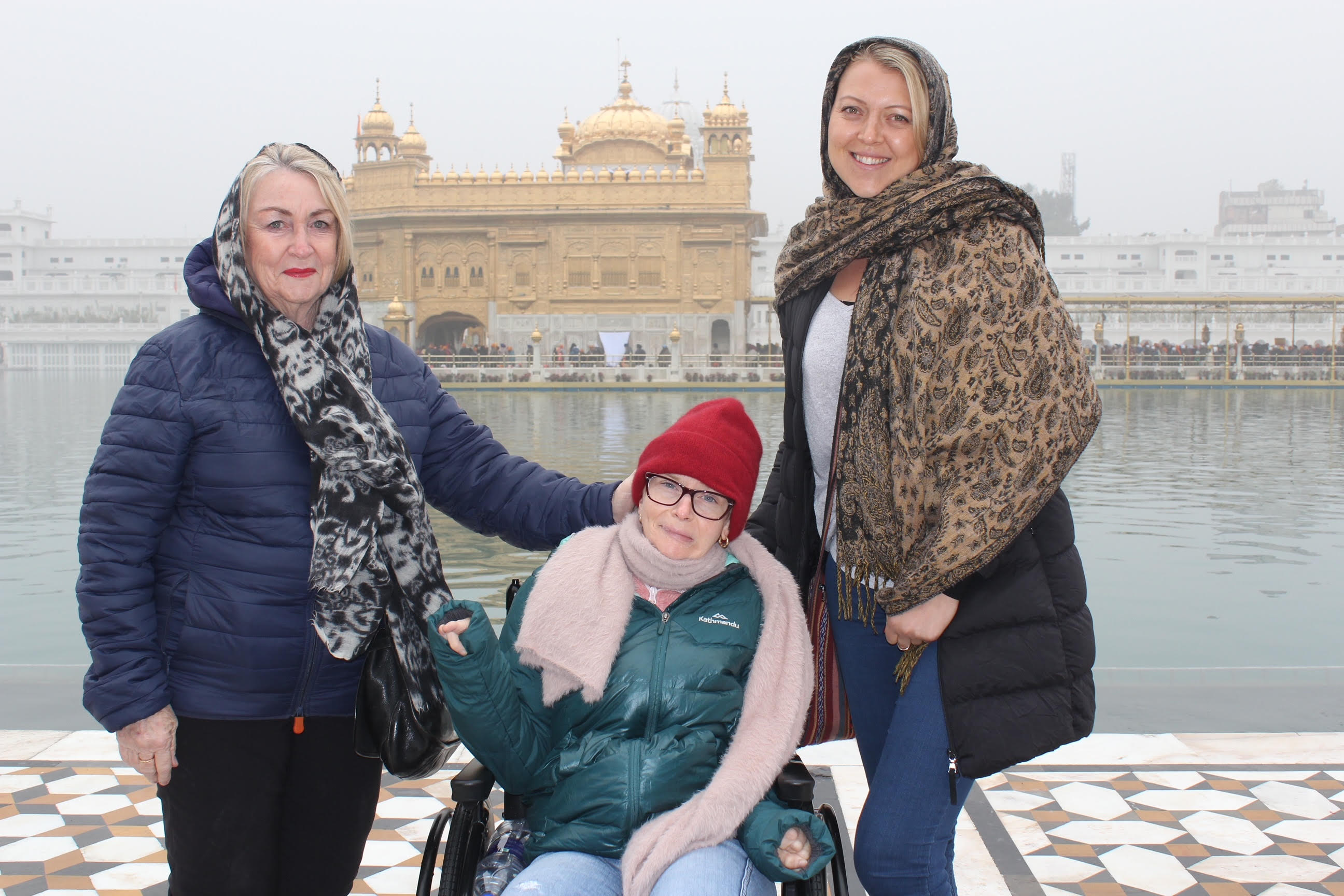29 October 2025
Travelling overseas with a disability is an adventure layered with anticipation, excitement, and to be honest, a lot of planning. While others might pack a passport, a swimsuit and phone chargers, those of us living with a disability are also mentally checking the accessibility of footpaths, transport, bathrooms, hotel rooms, and whether the airline crew will treat us like passengers or problems.
However, the truth is that people living with disabilities are travellers. We are adventurers, culture lovers, foodies, and beach loungers, and while systems weren’t always built with us in mind, we are advocating for inclusivity out there in the wide world - sometimes with a power chair, sometimes with a cane, and sometimes with a big spirit and a detailed spreadsheet.
I love to travel to different places that other people with a disability haven’t been to, such as India. It is an amazing place both spiritually and culturally. It is surprisingly accessible for people with disabilities, especially in larger cities. I want to travel to remote countries such as South Africa, South America, and Russia where accessibility is limited but the scenery is breathtaking. People living with disabilities have the right to travel to remote and remarkable places around the world like everyone else.
The key to a good trip isn’t luck - it’s about planning. For people with disabilities, the planning stage can be just as important as the trip itself. Before even booking flights, many of us research accessible accommodation, confirm airline wheelchair policies, and ask lots of follow-up questions about the so-called 'accessible' room. For example, does the shower have a lip? How wide is the door? Do they have grab rails, or just good intentions?
The payoff is freedom and confidence. A trip where you spend most of your energy enjoying the moment - not troubleshooting every second - is the dream. With good preparation, that dream becomes reality.
Airports can be a mixed bag. On a good day, the staff are helpful, you get an aisle chair without hassle, and clear communication makes the flying experience smooth and even empowering. On a bad day, mobility aids get damaged, people talk to your travel companion instead of you, or your needs are 'forgotten' in the rush to board.
For wheelchair users, one of the biggest concerns is, 'Will my wheelchair make it safely to the other side?' Airlines have made progress, but too often, chairs are still treated like oversized luggage instead of essential mobility equipment. This is why more travellers are speaking up, demanding better training, and sharing their experiences online to drive change.
Always call the airline’s special assistance team in advance - and sometimes more than once. Confirm that you’ll have support through security, onto the plane, and at your destination. Clearly label your mobility aids with instructions in case they need to be disassembled.
One of the best parts of overseas travel is the unexpected - hearing your laughter echo through a centuries-old church, sipping coffee in a cobbled laneway, or navigating a lively market with all your senses engaged.
It’s also worth acknowledging the emotional stress of travelling in a world that wasn’t built for us. Some countries are more accessible than others, and some are more inclusive. You may find yourself in a place where people stare, where support workers are rare, and access is minimal. That can be confronting. It is also a reminder of why visibility matters, and why our presence is powerful.
It’s not all struggles. There’s joy in connection - across language and across disability. You meet fellow travellers. You spot a ramp where you didn’t expect one. You find an inclusive tour guide who makes you feel like a VIP. And you realise you’re not alone. People living with disabilities around the world are finding ways to explore and enjoy it.
If you travel with a support worker, friend, or carer, it’s important to include rest and space for everyone. Long travel days are exhausting—physically and emotionally - so plan downtime, communicate clearly, and be ready to laugh when the tuk-tuk you flagged down turns out to be the most accessible ride in town.
For solo travellers, independence can be empowering - but safety is key.
-
Use apps to share your location with trusted contacts.
-
Carry a medical letter or emergency information translated into the local language.
-
Never underestimate the value of a portable charger, a water bottle, and snacks.
Travelling with a disability may take more preparation and more energy - but it proves, again and again, that we belong everywhere. In the Greek islands, on New York subways, at Japanese shrines, and in Parisian cafes - by the sea, in the sky, and in the heart of it all.
So, if you’ve been dreaming of travelling overseas, start planning. Start asking questions. Start dreaming louder - because it’s a big wide world, and it’s waiting for us too.
Explore more topics
- Accessibility
- inclusion
- disability
- Achieve Australia
- belonging
- The Sewing Basket
- Employment
- disability employment
- Accessible
- Community
- NDIS
- 2022
- Advocacy
- Meet our Achievers
- My Life My Say
- blog
- people with disability
- travel
- women with disability
- Art
- Australia
- COVID-19
- Celebrating people we support
- Disability services
- Good nutrition
- Health tips
- Mental wellbeing
- NDS
- Sharing milestones
- Sydney
- achievable
- assistance dogs
- depression
- disability communications
- disability inclusion
- election
- employee of the year
- intellectual disability
- motherhood
- pregnancy
- social inclusion
- support workers

